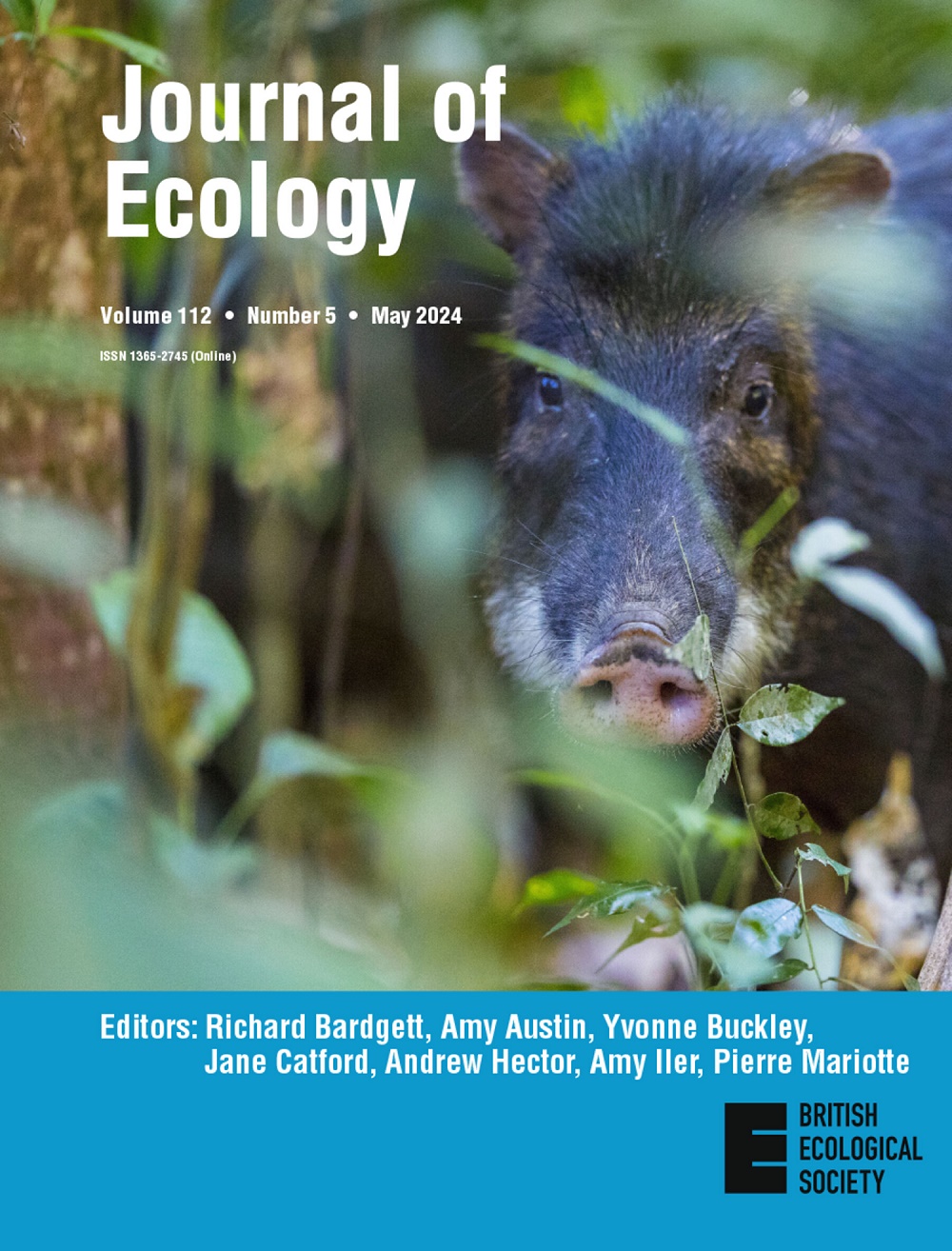Increasingly conservative N cycling in a wet tropical forest: Litter and stream N concentrations decline over 29 years despite surges from hurricanes
IF 5.6
1区 环境科学与生态学
Q1 ECOLOGY
引用次数: 0
Abstract




湿润热带森林中日益保守的氮循环:尽管飓风带来了激增,但29年来凋落物和溪流中的氮浓度仍在下降
在飓风易发地区,长期的凋落物趋势尚未被探索,但需要了解飓风政权改变的后果。在波多黎各东北部的潮湿热带森林中,我们连续29年(1989-2017)每2周监测一次凋落物质量(落叶、直径2.5 cm的木材和其他)、凋落物碳(C)、氮(N)和溪流硝酸盐。9个观测到的飓风的凋落物平均为500 g m−2飓风−1 (CV = 90%),几乎是长期平均值951 g m−2年−1的一半。自前一次飓风以来,飓风造成的落叶和木材落叶随扰动强度(峰值风速)和时间的增加而增加。两次最强烈的飓风造成的木材损失超过了相应的落叶损失和年平均木材损失。29年来,由于木材和其他材料的增加,而不是落叶的增加,凋落物增加。个别飓风后凋落物的恢复是独特的,说明了飓风强度和历史对凋落物动力学的不同影响。落叶氮浓度[N]在飓风过后立即飙升,但在29年间下降了约33%。在流域尺度上也观察到类似的变化,主要飓风过后,溪流中的硝酸盐含量增加,但随后长期下降。年平均落叶量[N]与前一年的细材落叶量呈负相关,而与前一年的细材落叶量[N]呈正相关,表明细材动态与植物氮吸收之间存在联系。在飓风过后和不同年份,河流硝酸盐‐[N]与落叶[N]呈强烈的正相关,表明在气旋扰动和恢复期间,陆地和水生氮循环之间存在紧密耦合。凋落物[N]和溪流硝酸盐[N]的年代际减少以及木材凋落物的增加表明N的循环趋向于更保守的趋势,飓风和恢复过程中木材凋落物中的微生物固定N可能是导致N有效性降低的原因。合成。在当前的飓风扰动状态下,可以预期N的更保守的循环。然而,随着飓风频率和强度的增加,缺乏成熟冠层典型的高木材落可能会改变目前的N循环趋势。
本文章由计算机程序翻译,如有差异,请以英文原文为准。
求助全文
约1分钟内获得全文
求助全文
来源期刊

Journal of Ecology
环境科学-生态学
CiteScore
10.90
自引率
5.50%
发文量
207
审稿时长
3.0 months
期刊介绍:
Journal of Ecology publishes original research papers on all aspects of the ecology of plants (including algae), in both aquatic and terrestrial ecosystems. We do not publish papers concerned solely with cultivated plants and agricultural ecosystems. Studies of plant communities, populations or individual species are accepted, as well as studies of the interactions between plants and animals, fungi or bacteria, providing they focus on the ecology of the plants.
We aim to bring important work using any ecological approach (including molecular techniques) to a wide international audience and therefore only publish papers with strong and ecological messages that advance our understanding of ecological principles.
 求助内容:
求助内容: 应助结果提醒方式:
应助结果提醒方式:


